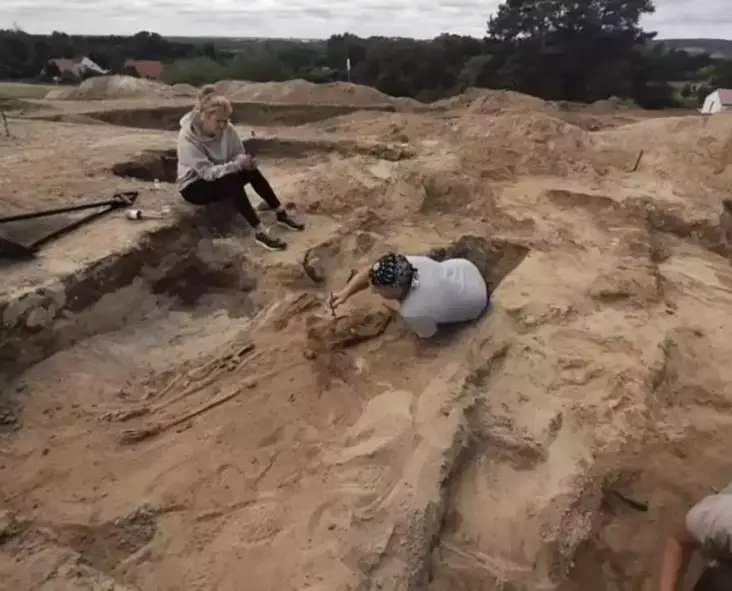Archaeologists in Poland made a chilling discovery of a 17th-century burial site where a woman was buried with a sickle placed over her neck and a padlock on her toe. The team, led by Professor Dariusz Polinski from the Nicholas Copernicus University, found the remains in an unmarked grave in the village of Pien. The burial method suggests the villagers believed the woman could rise from the dead, with the sickle strategically placed to potentially decapitate her if she tried to stand up.

Polinski explained that the sickle wasn’t laid flat but positioned in a way to cut or injure the neck if there was an attempt to rise. The padlock on her toe symbolized a “closing of a stage and the impossibility of returning,” signifying a deep-rooted fear among locals that she was a vampire. The fear of the undead was widespread in medieval Europe, where communities took extreme measures like decapitation, placing stakes in the body, and using heavy stones to prevent suspected vampires from coming back.


This recent discovery adds to previous findings, such as a 2015 dig where several men were found buried with sickles around their necks. The use of a sickle wasn’t always an indication of vampirism; in some cases, it was believed to protect the deceased from evil spirits or prevent them from harming the living. These burials highlight the medieval obsession with preventing the dead from coming back to life, a stark reminder of the era’s superstitions.
Though the belief in vampires may seem purely fictional now, these archaeological findings shed light on the rituals that were once taken very seriously. The grave of this so-called “vampire” woman provides a glimpse into the fears and customs of past communities that were deeply concerned with keeping the dead firmly in their graves.




